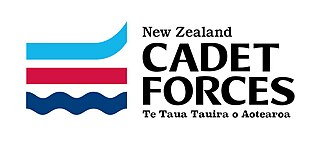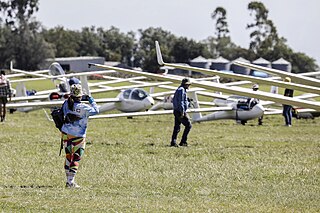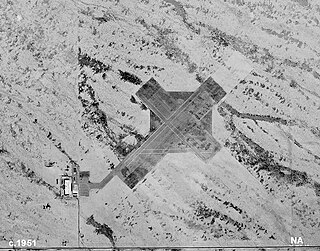
In most countries one is required to obtain a glider pilot license (GPL) or certificate before acting as pilot of a glider. The requirements vary from country to country.

The Civil Aviation Authority (CAA) is the statutory corporation which oversees and regulates all aspects of civil aviation in the United Kingdom. Its areas of responsibility include:

A private pilot licence (PPL) or private pilot certificate is a type of pilot licence that allows the holder to act as pilot in command of an aircraft privately. The basic licence requirements are determined by the International Civil Aviation Organization (ICAO), but implementation varies from country to country. According to ICAO, an applicant must be at least 17 years old, demonstrate appropriate knowledge and skill, and hold at least a Class 3 medical certificate. Different PPLs are available for different categories of aircraft, such as aeroplane, helicopter, airship, etc., and are not interchangeable, although experience from a PPL in one category may be credited towards the issue of another.
A motor glider is a fixed-wing aircraft that can be flown with or without engine power. The FAI Gliding Commission Sporting Code definition is: a fixed-wing aerodyne equipped with a means of propulsion (MoP), capable of sustained soaring flight without thrust from the means of propulsion.
The Glider Pilot, Liaison Pilot, and Service Pilot badges were qualification badges of the United States Army Air Forces issued during the years of World War II to identify a rating in one of three specialized, limited-duty pilot categories whose selection and training differed from that of the traditional military pilot.

The New Zealand Cadet Forces is a voluntary military-style training organisation for New Zealand youth between the ages of 13 and 21. Run in partnership with the New Zealand Defence Force (NZDF) and local community organisations. Through its three branches, the New Zealand Cadet Forces provide young adults with a four-year training curriculum, while a number of local, area, and national camps and courses provide further experience and qualifications. It is jointly funded by the Ministry of Defence, the Royal New Zealand Returned Services' Association, local communities, and the Associated charities belonging to each branch. Overall it is directed by Air Marshal Kevin Short, Chief of Defence Force. Cadets are not under any obligation to join the New Zealand Defence Force, however many choose to do so upon turning 18 years old.

Airways Airsports is an airpark at Darley Moor Airfield, Derbyshire, offering hang gliding, paragliding, paramotoring, and microlight training and flying. It is a British Hang Gliding and Paragliding Association and British Microlight Aircraft Association (BMAA) recognised school. Instructors include a three-times world champion, world record holders, British cross country champion, British distance record holder, Royal Aeroclub gold medal winner, and members of the British hang gliding and paragliding team.
The British Gliding Association (BGA) is the governing body for gliding in the United Kingdom. Gliding in the United Kingdom operates through 80 gliding clubs which have 2,310 gliders and 9,462 full flying members, though a further 17,000 people have gliding air-experience flights each year.

The Gliding Federation of Australia, also known as Gliding Australia, is the governing body for the sport of gliding in Australia. It was founded in 1949. Gliding Australia is responsible to Civil Aviation Safety Authority for the conduct of safe gliding operations in Australia. This includes the setting and maintenance of flying standards and in particular training standards, for gliding and soaring flight in heavier-than-air fixed-wing gliders and sailplanes, powered sailplanes and touring motor gliders, but excluding flexible wing, weight shift hang gliders and paragliders.

The Soaring Society of South Africa (SSSA) is the body to which all gliding and touring motor gliders in South Africa must belong, as stipulated in law by the South African Civil Aviation Authority (CAA), to pursue the sport of gliding within South Africa. It is affiliated to the Aeroclub of South Africa which also represents all the sporting bodies at the CAA. Membership is by subscription directly to the SSSA.

Hawarden Airport, is an airport near Hawarden in Flintshire, Wales, near the border with England and 3.5 NM west southwest of the city of Chester.

A Volunteer Gliding Squadron (VGS) is an aircraft squadron of the Royal Air Force (RAF) which provides flying training in glider aircraft for Royal Air Force Air Cadets. All current operational Volunteer Gliding Squadrons operate a sole type of aircraft, the Grob G103A Twin II Acro, a conventional winch-launched tandem-seat sailplane known by its British military designation, Viking T1.

Philip Aubrey Wills CBE was a pioneering British glider pilot. He broke several UK gliding records from the 1930s to the 1950s and was involved in UK gliding administration including being Chairman of the British Gliding Association (BGA).

Wycombe Air Park, also known as Booker Airfield, is an operational general aviation aerodrome located in Booker, Buckinghamshire, 2.4 nautical miles south-west of High Wycombe, England. The airfield celebrated its 50th year of opening on 25 April 2015. It originally opened in 1941 as RAF Booker and was primarily involved in training during World War II, remaining a military establishment until 1965.

Gliding is a recreational activity and competitive air sport in which pilots fly unpowered aircraft known as gliders or sailplanes using naturally occurring currents of rising air in the atmosphere to remain airborne. The word soaring is also used for the sport.

Echeverria Field is an abandoned airfield, located approximately 15 miles (24 km) west of Wickenburg, Arizona.

During World War II civilian flying schools, under government contract, provided a considerable part of the flying training effort undertaken by the United States Army Air Forces.

The Royal Air Force Gliding & Soaring Association (RAFGSA) is a voluntary organisation which exists to provide recreational flying to all RAF servicemen and women, in particular those employed in ground duties.

614 VGS is a former Volunteer Gliding Squadron. One of 27 Volunteer Gliding Squadrons, it was made up of between 40 and 60 personnel who annually conducted around 6,000 launches, producing more than 800 hours airborne. The squadron is currently operating under No.2 Flying Training School, within No.22 (Training) Group of RAF Air Command.
This is a glossary of acronyms, initialisms and terms used for gliding and soaring. This is a specialized subset of broader aviation, aerospace, and aeronautical terminology. Additional definitions can be found in the FAA Glider Flying Handbook.















